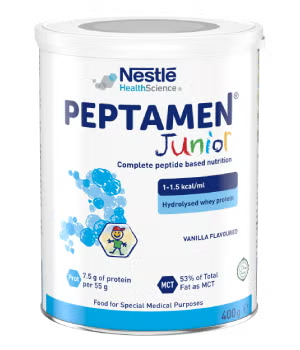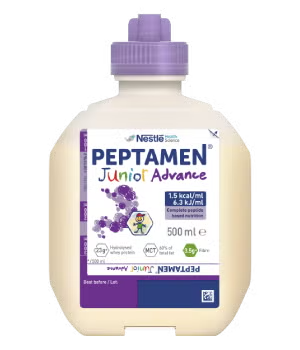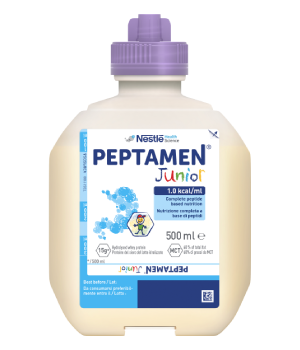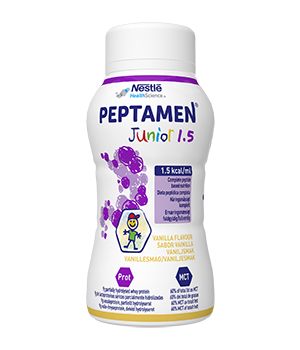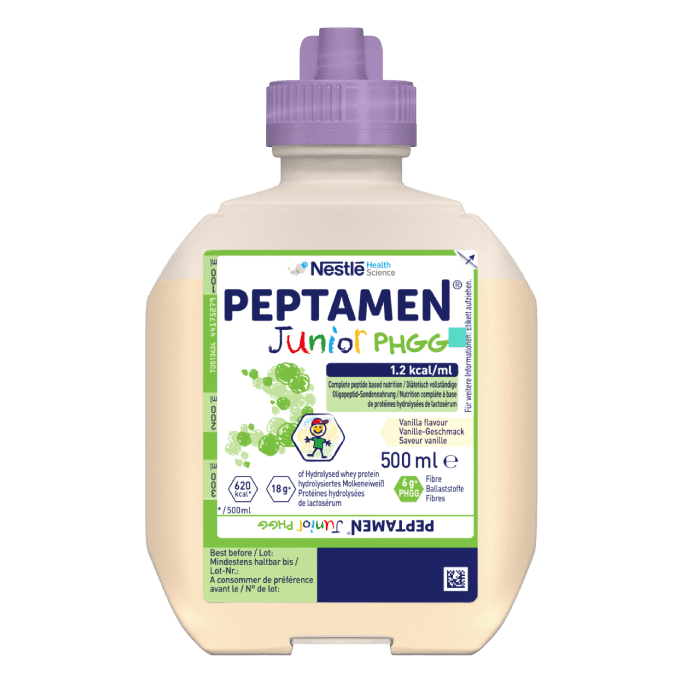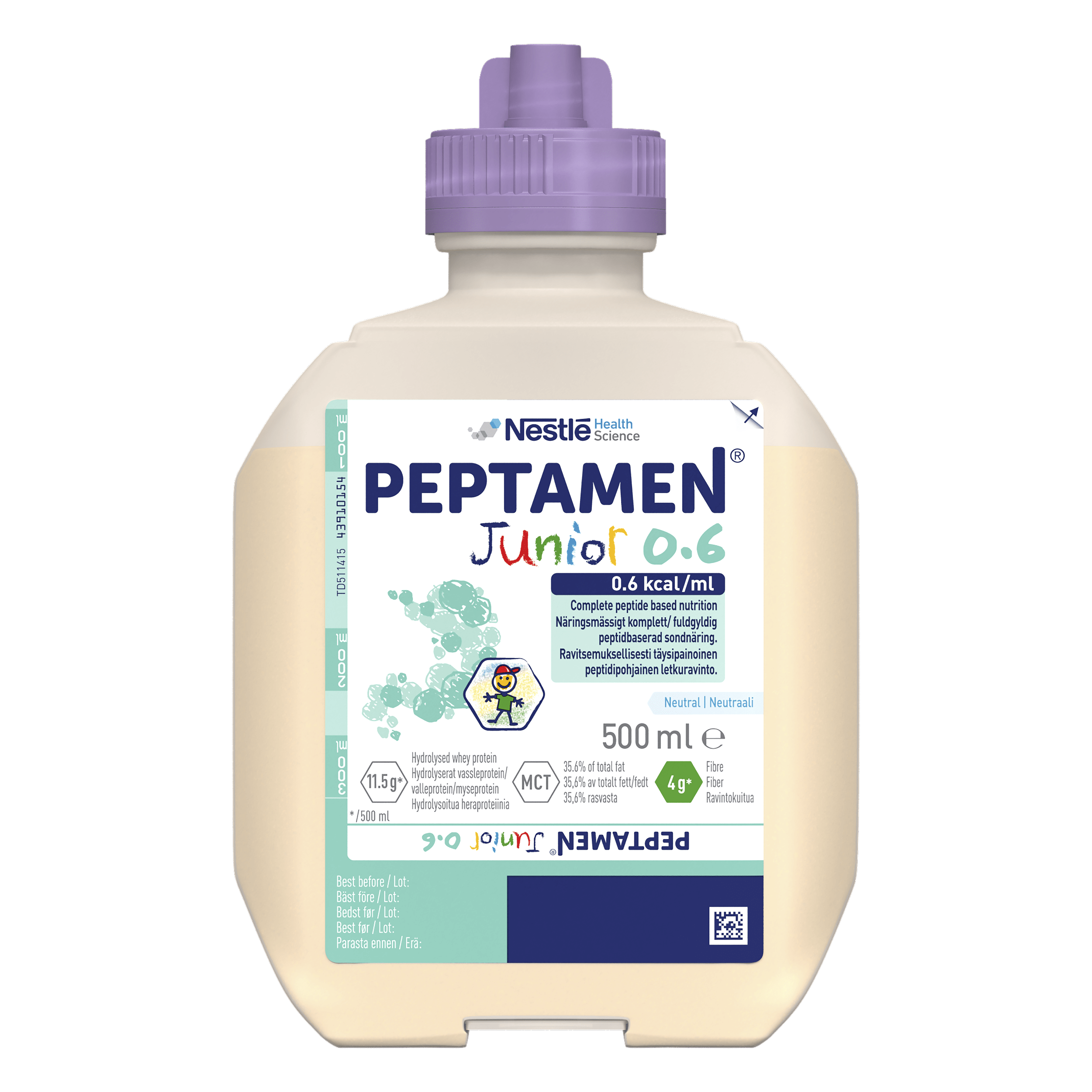SPECIALISED ENTERAL NUTRITION FOR PAEDIATRIC PATIENTS WITH COMPROMISED OR IMPAIRED GASTROINTESTINAL FUNCTION
The Peptamen® Junior family of semi-elemental enteral and oral formulas offer complete nutritional support and improved feeding tolerance for patients with conditions such as malabsorption, diarrhoea, feeding intolerance to standard enteral formulas, delayed gastric emptying, short-bowel syndrome, and pancreatic insufficiency.
Whey-peptide formulas, such as Peptamen® Junior, have been shown to achieve improved outcomes for patients who are unable to digest or absorb standard enteral formulas.1
Peptamen® Junior Advance, Peptamen® Junior Liquid and Peptamen® Junior Powder are all supported by clinical evidence. The Peptamen® range is also the only family of 100% whey peptide formulas for the early years to adulthood.
PEPTAMEN JUNIOR RANGE
Facilitates gastric emptying:
- While casein-based feeds can precipitate in the stomach,2 whey-based formulas like Peptamen® Junior remain liquid
- Peptamen® Junior, with its hydrolysed 100% whey protein and MCT content, significantly improves gastric emptying and reduces the frequency of vomiting vs. casein-based formulas3
Optimises absorption:
- Whey-based feeds may help patients with difficulties digesting or absorbing standard diets to reach their nutritional goals and improve health outcomes1
- Peptamen® Junior is made with 53–60% of fat as MCT, which may help improve digestion and absorption4
- Peptamen® Junior has low to moderate osmolarity, which may help reduce the risk of osmotic diarrhoea5,6
- In a 1-year prospective study, Peptamen Junior® and a regular diet with oral nutritional supplements significantly increased height and weight velocity when compared to the previous year7
- In a study of children with severe growth failure, Peptamen Junior® (28 days, every 4 months) significantly increased bone density z-scores after 1 year vs. those fed a high-calorie diet only8
- All products in the Peptamen® Junior range have pH levels between 6 and 79
- SmartFlexTM – recyclable, collapsible, semi-rigid enteral bottle, utilising an advanced sterilisation process, offers improvements in safety and handling
References:
- Alexander DD et al. World J Gastrointest Pharmacol Ther 2016; 7(2): 306–319.
- Jahan-Mihan A et al. Nutrients 2011; 3(5): 574–603.
- Fried MD et al. J Pediatr 1992; 120: 569–572.
- Rolandelli RH et al. Lipids and enteral nutrition. In: Clinical Nutrition: Enteral and Tube Feeding. JL Rombeau, RH Rolandelli (eds). W.B. Saunders Company, 1997.
- Metheny NM. Fluid and electrolyte disturbances associated with tube feedings. In: Fluid and Electrolyte Balance: Nursing Considerations (5th ed). Jones and Bartlett Publishers, Inc. 2010; 179–189.
- Thomas B, Bishop J (eds). Clinical chemistry. In: Manual of Dietetic Practice (4th edn). Blackwell Science Ltd, 2007; 861–864.
- Polk DB et al. J Parenter Enteral Nutr 1992; 16(6): 499–504.
- Herzog D et al. Gastroenterology 1997; 112: A995.
- NHSc pH Product Analysis Report UK 2018.
Footnotes and abbreviations:
Peptamen® Junior contains milk proteins, and is not suitable for patients with cows’ milk allergy.

The content you are trying to access is intended for healthcare professionals only.

